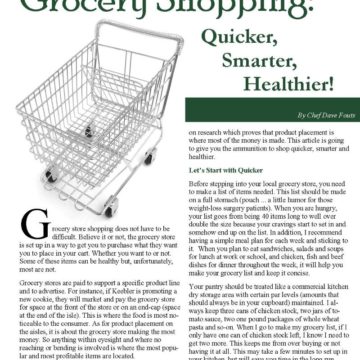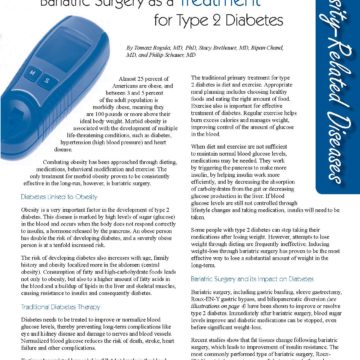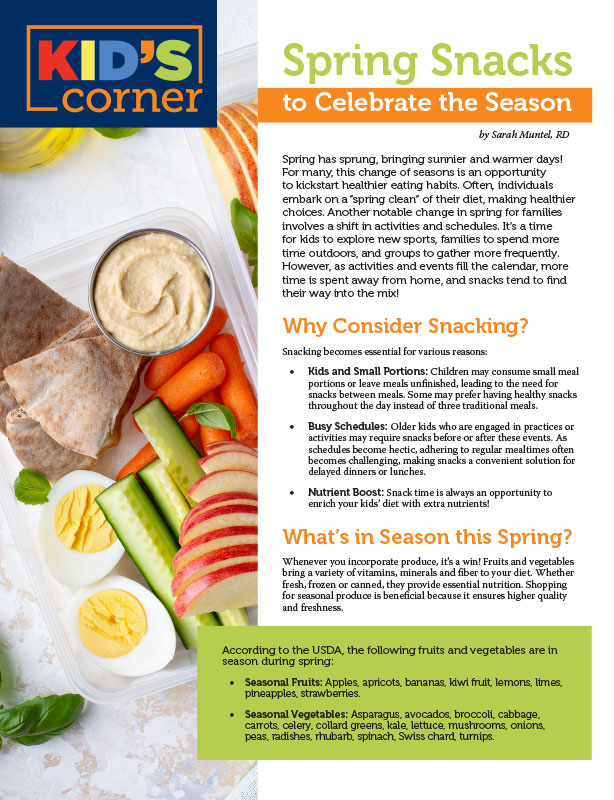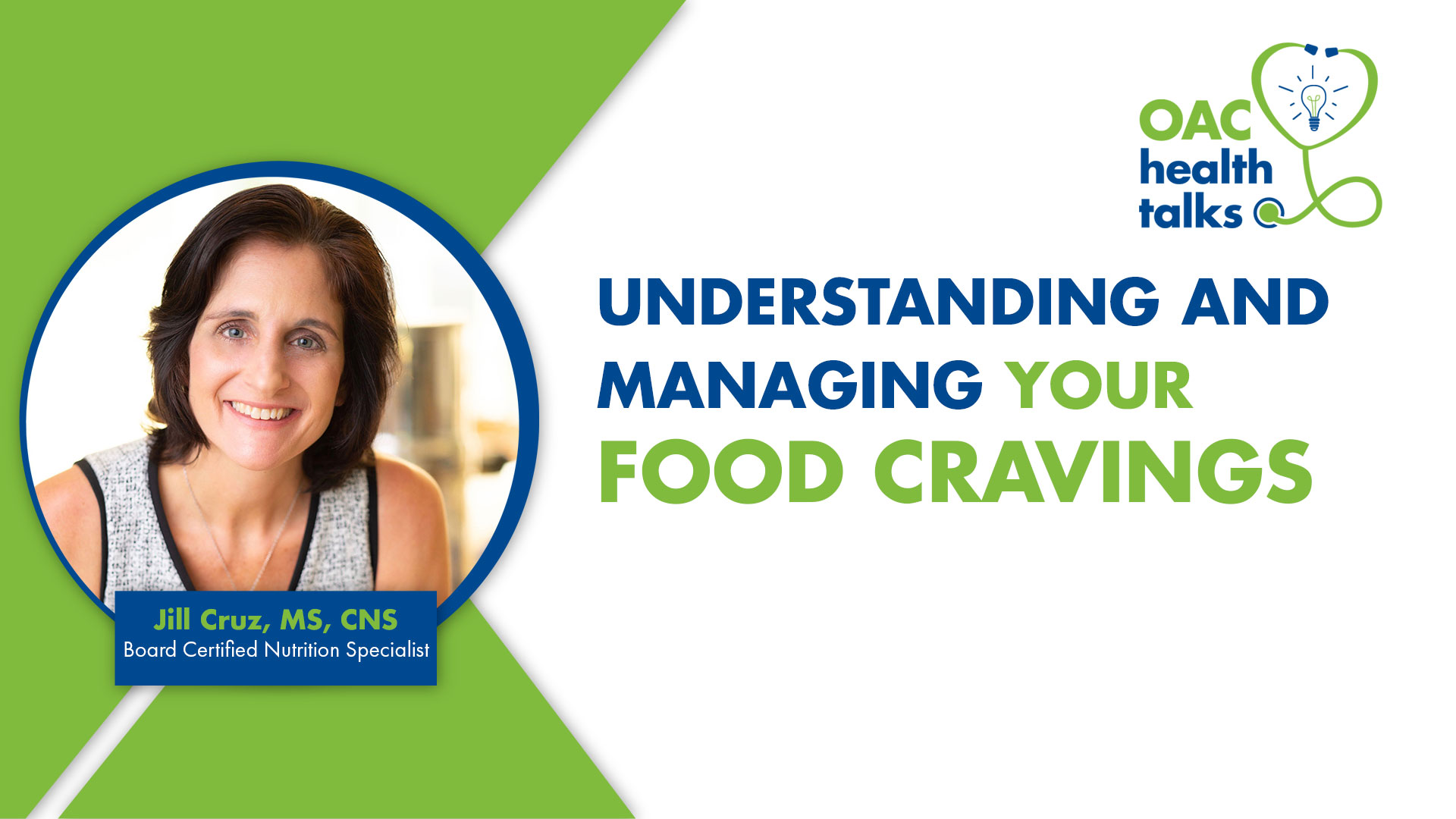The Food Pyramid in 2006

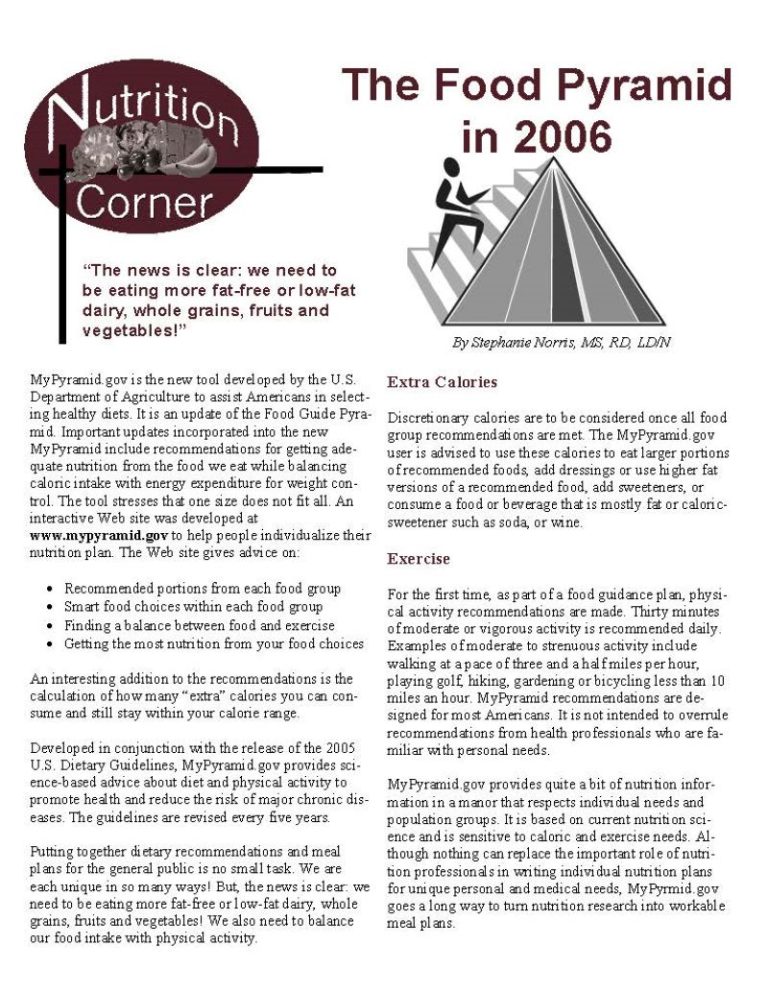
by Stephanie Norris, MS, RD, LD/N
Spring 2006
MyPyramid.gov is the new tool developed by the U.S. Department of Agriculture to assist Americans in selecting healthy diets. It is an update of the Food Guide Pyramid. Important updates incorporated into the new MyPyramid include recommendations for getting adequate nutrition from the food we eat while balancing caloric intake with energy expenditure for weight control. The tool stresses that one size does not fit all. An interactive Web site was developed at www.mypyramid.gov to help people individualize their nutrition plan. The Web site gives advice on:
- Recommended portions from each food group
- Smart food choices within each food group
- Finding a balance between food and exercise
- Getting the most nutrition from your food choices
An interesting addition to the recommendations is the calculation of how many “extra” calories you can consume and still stay within your calorie range.
Developed in conjunction with the release of the 2005 U.S. Dietary Guidelines, MyPyramid.gov provides science-based advice about diet and physical activity to promote health and reduce the risk of major chronic diseases. The guidelines are revised every five years.
Putting together dietary recommendations and meal plans for the general public is no small task. We are each unique in so many ways! But, the news is clear: we need to be eating more fat-free or low-fat dairy, whole grains, fruits and vegetables! We also need to balance our food intake with physical activity.
Extra Calories
Discretionary calories are to be considered once all food group recommendations are met. The MyPyramid.gov user is advised to use these calories to eat larger portions of recommended foods, add dressings or use higher fat versions of a recommended food, add sweeteners, or consume a food or beverage that is mostly fat or caloric-sweetener such as soda, or wine.
Exercise
For the first time, as part of a food guidance plan, physical activity recommendations are made. Thirty minutes of moderate or vigorous activity is recommended daily. Examples of moderate to strenuous activity include walking at a pace of three and a half miles per hour, playing golf, hiking, gardening or bicycling less than 10 miles an hour. MyPyramid recommendations are designed for most Americans. It is not intended to overrule recommendations from health professionals who are familiar with personal needs.
MyPyramid.gov provides quite a bit of nutrition information in a manor that respects individual needs and population groups. It is based on current nutrition science and is sensitive to caloric and exercise needs. Although nothing can replace the important role of nutrition professionals in writing individual nutrition plans for unique personal and medical needs, MyPyrmid.gov goes a long way to turn nutrition research into workable meal plans.
Looking at the Food Groups
The food groups have remained basically the same (grains, fruits, vegetables, milk, meats and beans, oils), but there are some important differences in the message. The following is a synopsis of the most important changes from each food group:
Grain Group
The recommendation from the grain group is for at least one-half of your grain choices to be whole grain. This recommendation is supported with a definition of whole grains and gives examples, including 100 percent whole wheat bread, oatmeal, brown rice and barley. A portion size is – one ounce, the equivalent of one slice of bread, one cup of cold cereal or one-half cup of hot cereal, rice or pasta.
TIP: To increase whole grain consumption, try stocking the pantry with 100 percent whole wheat bread, whole grain pasta, brown rice and whole grain cereals. Substituting whole grains in recipes and asking for whole grains in restaurants, such as whole grain cereals, is recommended.
Vegetable Group
Vegetables are divided into subgroups, including dark green, orange, dry beans and peas, starchy and others. The recommendation for how often you consume dark green, orange and dry beans and peas varies with personal plans. Servings vary, but a general rule is to consider one cup as a serving for most vegetables. Two cups is a serving for salad leaves. One medium-sized baked potato is considered one cup, but starchy vegetables are recommended to be consumed only three times a week.
TIP: To get more vegetables in your diet, look for vegetables that are in season and keep frozen and easy-to-prepare vegetables on hand. Pick up pre-washed vegetables and take them with you when you travel.
Dairy Group
Americans ages nine and older need to consume three servings of fat-free or low-fat dairy everyday. The guidelines not only recognize dairy products as an important source of calcium, but also as nutrient-dense foods associated with overall diet quality and nutrient adequacy. For those who are lactose intolerant, recommendations from within the milk group are made, such as low-fat hard cheeses (cheddar, Swiss), yogurt or lactose-free milk. A serving is considered one cup of fat-free milk or yogurt. An equivalent for hard cheese, such as low-fat cheddar, is one and a half ounces. Dairy foods such as milk, cheese and yogurt are rich in several nutrients that many Americans may be lacking, including calcium, potassium and magnesium.
TIP: To get more dairy in your diet, try having a glass of milk with meals, using milk in soups, hot cocoa or lattes and enjoying smoothies made with yogurt and fresh fruit. Yogurt also can be used to make dips for fruits or vegetables. You can also try adding low-fat cheese to casseroles as a tasty and nutritious touch to meals.
Fruit Group
The fruit group recommendations vary widely between personal plans, and so does what constitutes a serving. Whole fruits are encouraged over juices for the benefit of the fiber. Also, high-potassium fruits such as bananas and oranges are encouraged.
TIP: To increase your fruit consumption, try things such as keeping a bowl of fruit on the table or keeping fresh fruit cut-up in the refrigerator.
Meat and Bean Group
The meat and bean group has an interesting new difference from the past. Dry beans and peas are listed in the vegetable and the meat groups. Also, fish, nuts and seeds are encouraged as alternatives to meat and poultry. The portion sizes for this group vary quite a bit from the popular perception of what a portion should be. It is listed in one-ounce equivalents and although total recommendations for the day vary, most age, sex and activity levels typically recommend five or six equivalents.
TIP: Choose meat and poultry that are lean or low-fat. Processed meats such as ham, sausage, frankfurters, and luncheon or deli meats have added sodium. Check the ingredient and Nutrition Facts label to help limit sodium intake.
Fish, nuts, and seeds contain healthy oils, so choose these foods frequently instead of meat or poultry.
Oil Group
There is now a separate group for oils. MyPyramid.gov recognizes the important nutrition contribution of oil in the overall diet. It also recognizes that most Americans get plenty of oil from nuts, fish, cooking oil and salad dressing. Recommendations vary widely for this group and are, once again, based on age, sex and activity level. Portions are generally listed in one-tablespoon equivalents.
TIP: If you are trying to watch your cholesterol, choose oils from plant sources (vegetable and nut oils). They do not contain any cholesterol. In fact, no foods from plants sources contain cholesterol.
About the Author:
Stephanie Norris, MS, RD, LD/N, represents the Dairy Council of Florida in the promotion of quality nutrition education and research to health professionals, school food service and the media. For more than 15 years, Ms. Norris contracted with hospitals, nursing homes, assisted living facilities and an HMO to provide clinical nutrition services and programs. Ms. Norris has a Master’s Degree in Health Care Administration from the University of Central Florida.
by Sarah Muntel, RD Spring 2024 Spring has sprung, bringing sunnier and warmer days! For many, this…
Read ArticleEating disorders can be a concern or question for many who are along the journey to improved…
View VideoWhy we crave certain foods can be difficult to understand. Between the different types of food cravings…
View Video




